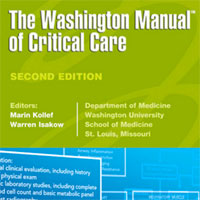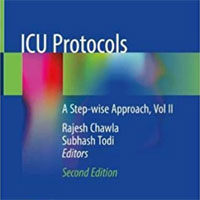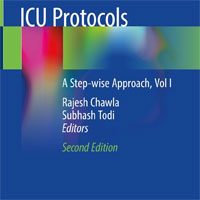Tag: hypotension
Effect of Targeted Polymyxin B Haemoperfusion on 28-Day Mortality in Patients With Septic Shock and Elevated Endotoxin Level
In adult patients with septic shock and high circulating endotoxin activity, does the use of polymyxin B hemoperfusion therapy significantly decrease 28-day mortality? Among patients with septic shock and high endotoxin activity,... read more
Approach to the Critically Ill Child: Shock
If you mainly treat adults or both adults and children like me, then you have probably heard the (very annoying) quote, "kids are not just small adults", and so I won't say it again. Well, I guess I just did, but at least... read more
Magnesium Sulfate for Rapid Atrial Fibrillation?
Currently, several medications are recommended for the management of atrial fibrillation with rapid ventricular response in the emergency department including calcium channel blockers, beta blockers and digoxin (the optimal... read more
Update on Perioperative Acute Kidney Injury
Acute kidney injury (AKI) in the perioperative period is a common complication and is associated with increased morbidity and mortality. A standard definition and staging system for AKI has been developed, incorporating a... read more
Intensive Care Medicine in 2050: Vasopressors in Sepsis
Vasopressors are used in sepsis when hypotension is assumed to be mainly due to a decreased arterial tone. However, the appropriate time to initiate vasopressors is not clearly defined, and fluid administration is most... read more
Hemodynamic Tolerance to IV Clonidine Infusion in the PICU
Although administration of clonidine is often associated with bradycardia and hypotension, these complications do not seem clinically significant in a mixed PICU population with a high degree of disease severity. Clonidine... read more
Duration of hypotension before initiation of effective antimicrobial therapy is the critical determinant of survival in human septic shock
Effective antimicrobial administration within the first hour of documented hypotension was associated with increased survival to hospital discharge in adult patients with septic shock. Despite a progressive increase in mortality... read more
Low-dose vs. High-dose Magnesium in Rapid Afib
Magnesium sulfate has been used as an adjunct medication for the treatment of atrial fibrillation (AF) due to its ability to lessen sinus node depolarization via calcium antagonism. Prior studies investigating magnesium in... read more
MAP of 65: Target of the Past?
Septic shock is defined as sepsis with hypotension refractory to fluid challenge and requiring vasopressor support combined with an increase in arterial lactate reflecting impaired cellular energy metabolism and dysoxia.... read more
Vascular Effects of Adrenomedullin and the Anti-Adrenomedullin Antibody Adrecizumab in Sepsis
Sepsis remains a major scientific and medical challenge, for which, apart from significant refinements in supportive therapy, treatment has barely changed over the last few decades. During sepsis, both vascular tone and vascular... read more
What’s New in Severe Pulmonary Embolism?
Severe pulmonary embolism (PE) remains a major cause of mortality. For intensivists managing the most "severe" forms of PE, we highlight the main recent advances in the care of such patients including risk stratification,... read more
The Myth of Vasopressors and Ischemia
Despite the widespread clinical use, and their well-documented life-saving properties, vasopressors are often maligned, accused of causing ischemia to fingers, toes, mesentery, kidneys, and so forth. Not only is the evidence... read more
The Relationship Between ICU Hypotension and In-hospital Mortality and Morbidity in Septic Patients
Current guidelines recommend maintaining a mean arterial pressure (MAP)≥ 65 mmHg in septic patients. However, the relationship between hypotension and major complications in septic patients remains unclear. We, therefore,... read more
Incidence of hypotension according to the discontinuation order of vasopressors in the management of septic shock
Tapering NE rather than AVP may be associated with a higher incidence of hypotension in patients recovering from septic shock who are on concomitant NE and AVP. However, further studies with larger sample sizes are required... read more
Vasopressors for Hypotensive Shock
This review seeks unbiased evidence about the effects of different drugs that enhance blood pressure on risk of dying in critically ill patients with impaired blood circulation. Review authors identified 28 randomized controlled... read more
Hemodynamic Response After Rapid Sequence Induction With Ketamine in Out-of-Hospital Patients at Risk of Shock as Defined by the Shock Index
After ketamine induction, high shock index patients exhibited blunted hypertensive responses and more frequent hypotension, whereas low shock index patients had sustained increases in pulse rate and SBP. One hundred twelve... read more
The Safety of a Novel Early Mobilization Protocol Conducted by ICU Physicians
There are numerous barriers to early mobilization (EM) in a resource-limited intensive care unit (ICU) without a specialized team or an EM culture, regarding patient stability while critically ill or in the presence of medical... read more
The Washington Manual of Critical Care
Prepared by residents and faculty at the Washington University School of Medicine, this pocket manual contains easy-to-read algorithms for the management of more than 80 medical and surgical problems arising in the intensive... read more

Should We Manage All Septic Patients Based on a Single Definition?
It is indisputable from the biological and clinical perspectives that not all cases of sepsis are the same. On the contrary, most have great many differences, that is, different portals of entry, clinical manifestations,... read more
Eye Protection in Anaesthesia and Intensive Care
New guidelines on prevention of eye injuries during anaesthesia and intensive care have been developed by the French Society for Anaesthesia and Intensive Care Medicine (SFAR), together with the French Ophthalmology Society... read more
Hypoxia and Hypotension in Patients Intubated by Physician Staffed Helicopter EMS
The effective treatment of airway compromise in trauma and non-trauma patients is important. Hypoxia and hypotension are predictors of negative patient outcomes and increased mortality, and may be important quality indicators... read more
Cardiohepatic Interactions in Heart Failure
Liver involvement in chronic heart failure has long been recognized and reflects the systemic hemodynamic changes that occur during the evolution of heart failure syndrome. Apart from venous congestion and backward failure,... read more









